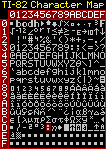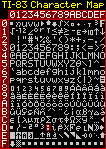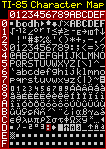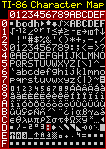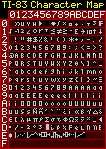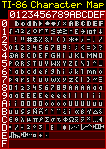Sections: optimizing | TI85/86 findpixels | Z80 instruction set
Calc programming
You'll prolly have noticed you can write programs in TI-Basic on your calculator. However, for the good™ stuff you should really write in assembly. This is "talking directly to the processor" and (so) much much faster and more powerful (limited only by the hardware.)
While it may sound scary (I bet most of you have stopped reading already by now) it actually isn't that hard. Unlike modern PCs, the z80 CPU has just very few instructions. Just the basic stuff like loading, adding, substracting, and... well, that's it mostly (complete instruction set right here). Because of this, learning it is quite easy, especially if you've got some other programming experience. Mastering it is a little harder, but that's the fun part actually ;)
If you do want to do some programming, be prepared to put some time in it though. You can't learn z80 and make quality programs in just a few hours. You've got to spend all of your spare time, fail classes, and even like it.
Tips
Some random notes for asm programmers:
-
To learn (more about) programming for the TI-86, check The Guide.
-
Puhleese use some
halts if you want to delay! A halt takes approx. 5 ms and saves a lot of battery life. -
A great help when optimizing code is my z80.txt: it lists all z80-instructions (including some unsupported ones), and shows their speed (cycles), their opcode (and size), and which flags they alter! It can be very useful!
-
For beginning z80 programmers, who don't have developed that z80 feeling yet, some hints might help.
-
Also, check out my comparison of several TI-85/86 FindPixels.
-
These character maps might come in handy as well:
